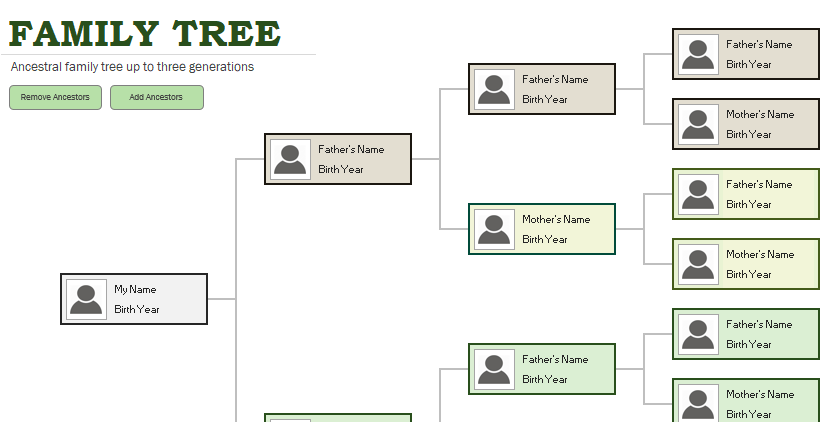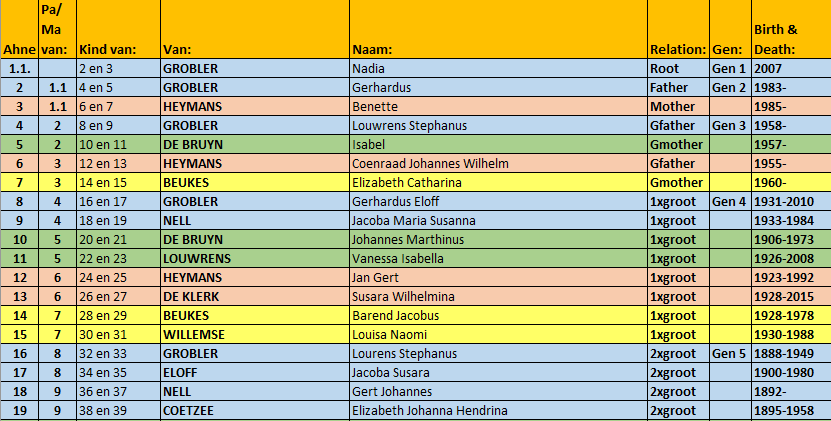Family trees are the foundational blueprints of our heritage, an intricate design that maps out the essence of our origins. Understanding these formats can unravel the rich tapestry of our lineage. From the simple elegance of a pedigree chart to the more complex web of a fan chart, each format serves a unique purpose in presenting the branches and leaves of our familial tree.
Pedigree Charts:
Let's start with the classic, the pedigree chart. It's the family tree in its most straightforward form, resembling a branching flowchart. This format highlights direct ancestry, usually focusing on one individual and their direct ancestors, like parents, grandparents, great-grandparents, and so on. This chart simplifies the family tree, making it easy to trace a particular line backward.

Descendant Charts:
On the flip side, descendant charts reverse the lens, focusing on the progeny of a particular individual. They display the individual and their children, grandchildren, and successive generations. This format gives a clear picture of a person's legacy and how their family line has extended over time.
Hourglass Charts:
This format embodies the merging of ancestral and descendant charts, like an hourglass. It showcases an individual in the middle, with their ancestors in the upper part and their descendants in the lower part, providing a comprehensive view of both lines.
Fan Charts:
Imagine the radiance of a colorful fan, each section representing a different generation. Fan charts expand the scope, displaying multiple generations in a circular, fan-like design. This format allows for a panoramic view of a family's history, showcasing a broader picture with color-coded sections representing different branches of the family.
Ahnentafel, or Ancestor Charts:
In this numerical format, each individual is assigned a unique number. For example, a person’s father is twice the person’s number, and the mother is twice the number plus one. This systematic approach makes it easier to organize and reference a large number of ancestors.

Cascading Trees:
These trees are dynamic, like a waterfall of lineage. They present multiple generations in a cascading or stepped format, allowing for easy visualization of multiple branches without overcrowding.
Now, as we explore the various family tree formats, it's essential to note personal preferences in organizing this wealth of information. Personally, I find a harmonious blend of the Ahnentafel method and fan charts to be particularly captivating. The Ahnentafel method offers a systematic and numerical approach akin to a well-organized library catalog, simplifying the process of tracing lineage. On the visual side, the fan chart transforms this data into a narrative, providing a vibrant and aesthetically pleasing depiction of our family's history. This harmonious union of order and artistry adds an extra layer of depth and meaning to the exploration of our ancestry.
Regardless of the chosen format, family trees encapsulate stories, struggles, triumphs, and the essence of who we are. They are not merely diagrams; they are narratives, speaking volumes about our shared past and shaping the paths of our future. Understanding these various formats is key to navigating and comprehending the wealth of information they hold. Each format offers a distinct perspective on the interconnectedness of our family history, allowing us to appreciate the complexity and diversity of our roots.
Feel free to explore the links below. You should be able to find a variety of pedigree chart templates that suit your preferences. Remember to choose a format that aligns with your specific genealogical goals and the information you want to showcase. Happy researching!
- FamilySearch: FamilySearch Pedigree Chart
- Ancestry.com: Ancestry Pedigree Chart
- MyHeritage: MyHeritage Family Tree
- Family Tree Templates: Family Tree Templates
- Microsoft Office Templates: Microsoft Office Pedigree Chart Templates
- Legacy Family Tree: Legacy Family Tree Charts
- Free Genealogy Forms and Charts: Free Genealogy Forms



Comments ()